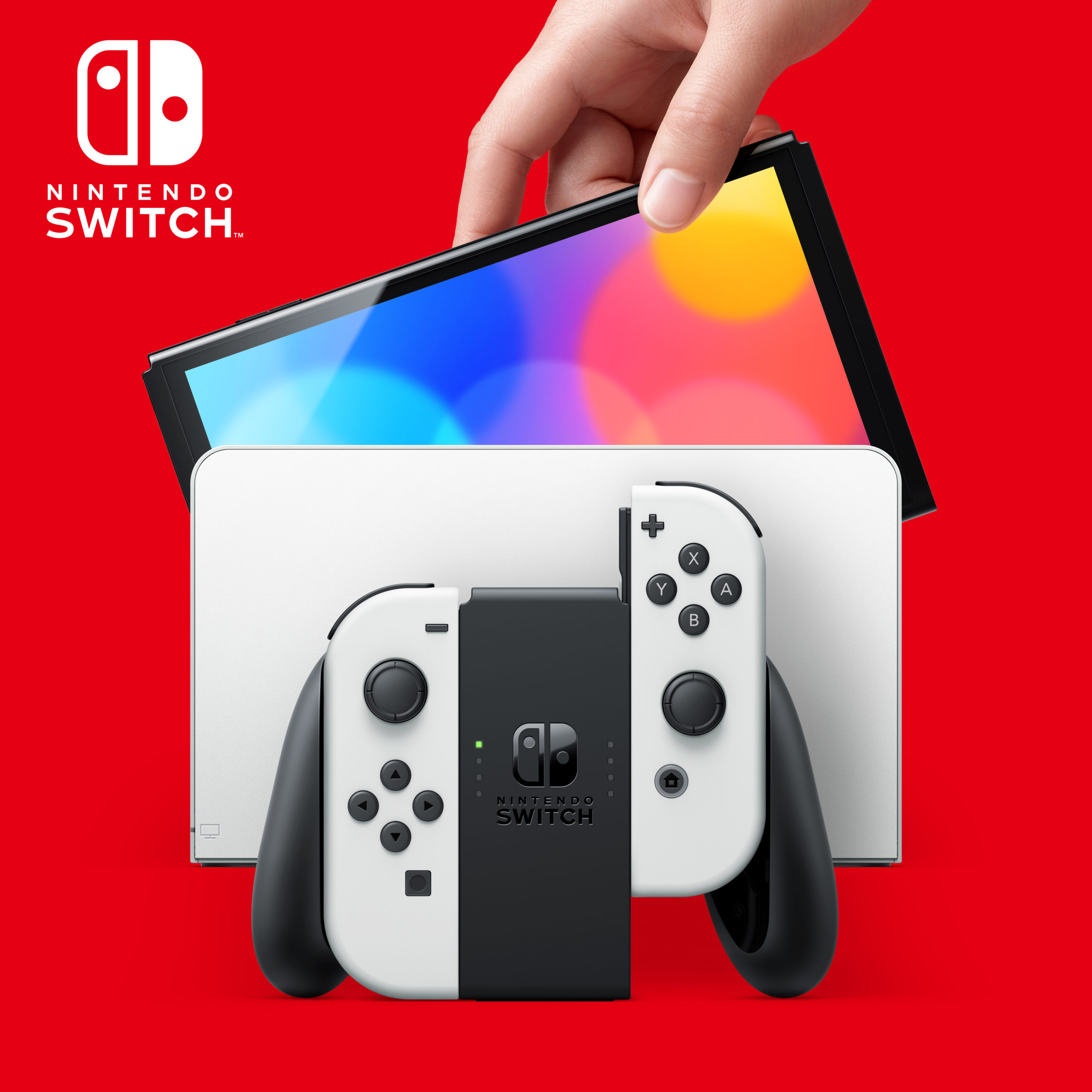
Earlier this month, Nintendo announced their latest addition to the Nintendo Switch family. Named the “OLED Switch,” it arrives this October, almost two years after the release of the Nintendo Switch Lite in September 2019. But is the latest Switch worth it?
Before we dive into the specifics of the OLED model, it’s important to look at the progression of the Nintendo Switch since its initial release in 2017. These days it is not uncommon for video game consoles to release many upgraded models and variations during its life. This trend in consoles releases has swayed towards marketing to either casual gamers or hardcore gamers: Discless consoles, smaller hard-drives, and the dubbed “LITE” version. Though these consoles are capable of playing the exact games within their generation (with the odd exception), it quite frequently comes down to price point as a main deciding factor for purchase.
The Nintendo Switch Lite was a console marketed towards the casual gamer. It was noticeably smaller in size and weight, was limited to handheld mode, and was not compatible with the Nintendo Switch Dock. The lack of tabletop or TV mode even meant that there were Nintendo Switch games that were not playable on this version of the Switch, like the popular fitness role-playing game Ring Fit. Yet the Switch Lite was met with success because of its price point of $199.00 USD/$259.99 CAD, especially when compared to the standard Switch model price of $299.00 USD/$399.99 CAD, a price difference of over $100.

The OLED Model unfortunately does not follow in the footsteps of its predecessor.
Where the Switch Lite was advertised for casual gamers, the assumption would be that the OLED would be a higher performing model of the Nintendo Switch. With a few exceptions, the OLED is remarkably comparable to the standard model. The hardware remains the same, though the OLED is bigger in size and weight with a larger touch OLED screen compared to the original LCD screen. The movable stand attachment is also bigger and sturdier. Beyond the dimensions the only other distinct difference is the OLED Switch Dock: this version has a LAN port, a distinct feature lacking in the previous Switch Docks.
Even with these minor changes, the OLED Model has an increased price of $349.99 USD/$449.99 CAD. Lacking any critical changes makes this price increase of this model a fruitless endeavor. Even new gamers would be better off purchasing the standard model for the price alone. The LAN port is really the only difference and hardly worth the cost. The crucial Joy-Con drift issues are reported to not be addressed in this Model, though consumers are still able to send their controllers directly to Nintendo to be fixed.
The OLED model is by no means a replacement console. It’s hardly a stepping stone in the life span of the Nintendo Switch, and, unless Nintendo intends to replace the standard model with the OLED, it will probably end up as merely a footnote in the Nintendo archives. Perhaps in the coming year or two Nintendo will release an updated Switch model worth our time. Until then, the Standard Nintendo Switch edition continues to be the best choice for most gamers.


![[REVIEW] CAPTAIN AMERICA: SENTINEL OF LIBERTY #1](https://geekd-out.com/wp-content/uploads/2022/06/captain-america-sentinel-of-liberty-1-feat-150x150.jpeg)
